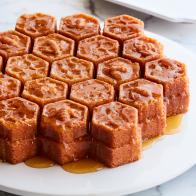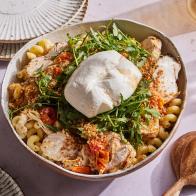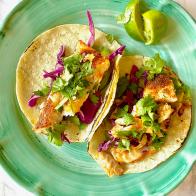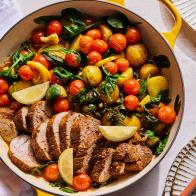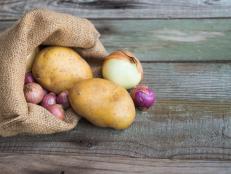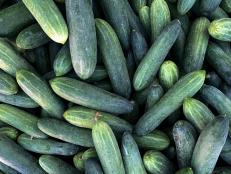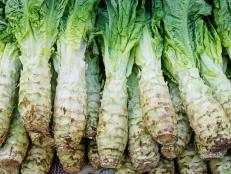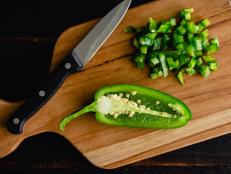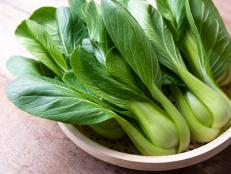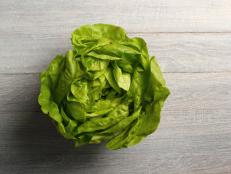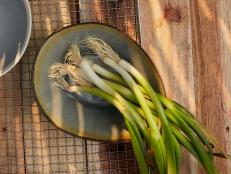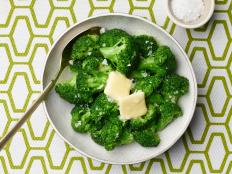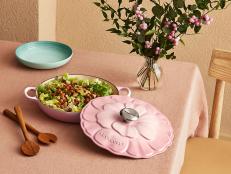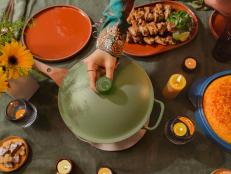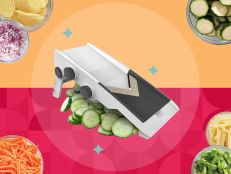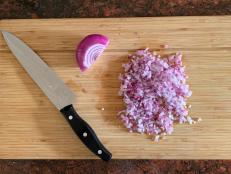Everything to Know About Vidalia Onions
Learn how to pick out, store, peel, cut and cook these sweet summer onions.
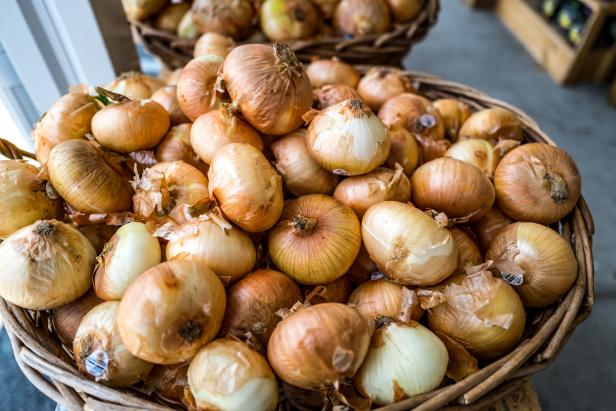
Judd Brotman/Getty Images
By Layla Khoury-Hanold for Food Network Kitchen
Layla Khoury-Hanold is a contributor at Food Network.
If you know about sweet onions, you’ve probably heard about the Vidalia variety. These alliums are a seasonal summer treat, and their delicate sweetness makes them versatile in a variety of raw and cooked dishes. Here’s everything you need to know about Vidalia onions.
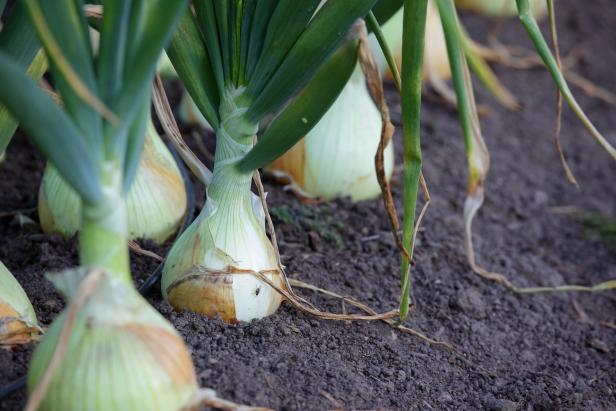
DaveAlan/Getty Images
What Are Vidalia Onions?
Vidalia onions are a sweet, mild yellow onion grown in Vidalia, Georgia. Vidalia onions have a higher water content, more sugar and less sulfuric compounds than bulb onions. Vidalia onions are grown in low-sulfur soil, which prevents the bulbs from developing a pungent taste and causes less crying when you slice them.
The Vidalia onion is the official state vegetable of Georgia, and the name is trademarked and owned by the Georgia Department of Agriculture. For an onion to be called a Vidalia, it must be produced in one of thirteen counties in Georgia and portions of seven others.
From a nutrition standpoint, Toby Amidor, MS, RD, CDN, FAND, award-winning nutrition expert and Wall Street Journal best-selling author of Diabetes Create Your Plate Meal Prep Cookbook says, “One medium Vidalia onion has 60 calories, 1 gram of protein, 16 grams of carbohydrates, and 3 grams of fiber. It also contains 15% of your daily dose of vitamin C.”
When Are Vidalia Onions In Season?
Vidalia onions are in season from late April through August. Most large supermarkets carry Vidalia onions when they're in season. Find them near the other onion varieties.
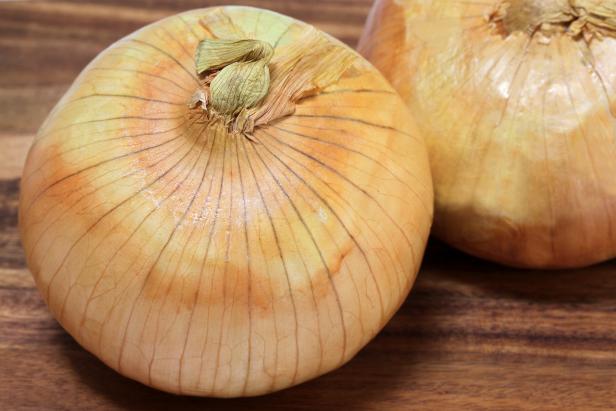
rojoimages/Getty Images
How to Pick a Good Vidalia Onion
To pick a good Vidalia onion, choose onions that are firm, dry and feel heavy, with smooth, dry skin and tightly closed necks. Avoid onions that have begun to sprout.
How to Store Vidalia Onions
Store Vidalia onions in a cool, dry and well-ventilated area. Amidor says you can also store Vidalias in the refrigerator. “Wrap each individual Vidalia bulb individually in paper towels and place in the crisper drawer in the fridge for up to several months,” Amidor says. “You can also use the legs of clean, sheer pantyhose to store them—be sure to tie a knot between each onion and hang in a cool, dry, well-ventilated place.” Amidor cautions against storing Vidalias with potatoes, as it will make the onions spoil quicker.
You can also preserve Vidalia onions to extend their shelf-life. Amidor offers two methods:
How to Dry Vidalia Onions
To dry, evenly chop the onions and spread them on a cookie sheet, then bake at the lowest setting. Remove when dry but not brown. Store in an airtight container at room temperature.
How to Freeze Vidalia Onions
To freeze whole Vidalia onions, peel, wash and core the onions before placing in freezer-safe bags. To store chopped onions, spread on a cookie sheet and place in the freezer. Once frozen, store in freezer-safe bags labelled with date and contents.
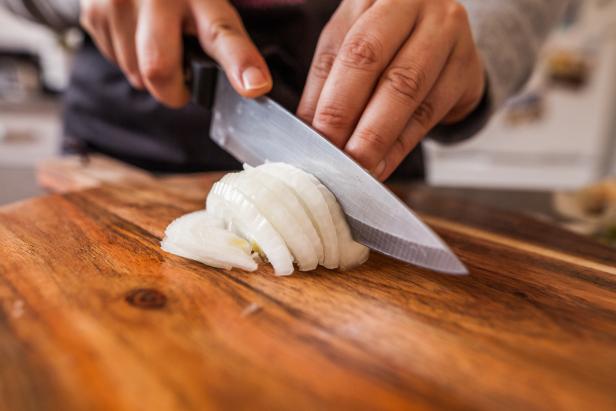
Capelle.r/Getty Images
How to Peel and Cut a Vidalia Onion
- Cut: Use a sharp knife to trim the root end and cut off the pointy tip of the onion, place the onion cut side down on a stabilized cutting board and cut the onion in half lengthwise, through the root end.
- Peel: Peel both halves of the onion by grasping a corner of the papery outer layer near the onion's flat tip end and firmly pull it to remove. Don't remove any of the large onion layers below the paper; if some paper remains near the tip, slice off that area.
- Slice: Slice straight down through the onion half to create half-moons. The farther you move between slices, the thicker your onion slices will be. Use them raw in salads, add them to stir-fries or sautee or caramelize them.
For more info, check out our step-by-step guide How to Cut an Onion.

Renee Comet, 2013, Television Food Network, G.P. All Rights Reserved
What to Cook with Vidalia Onions
Vidalia onions’ mild flavor makes them versatile in a variety of cooking applications and dishes, such as raw in salads, baked in vegetable dishes, caramelized for dips or sauteed to accompany grilled meats. You can cook with Vidalia onions in any dish you’d use regular onions.
Enjoy them Raw
Thinly slice raw Vidalias to showcase their delicate sweetness and make them the star of a salad, as with this Quick Vidalia Onion, Mushroom and Parsley Salad. Thinly sliced raw Vidalias also make a great topping for sandwiches, burgers or pizza. Or trying shaving or grating raw Vidalia onions to jazz up burgers, meatloaf and meatballs, like these Oklahoma Onion Burgers or Air Fryer Sweet-and-Sour Meatballs. Sautee Vidalia onions and serve as an accompaniment for meaty mains, as with this recipe for Roast Pork and Sweet Potatoes or Sweet and Spicy Grilled Salmon.
Char Them
Vidalias lend themselves particularly well to charring, as with this 25-Minute Flank Steak with Charred Vidalia Onion Salad (pictured above) or these Cheesy Scrambled Egg Fajitas. Caramelize Vidalia onions to bring out even more of their natural sweetness; try them in French onion soup, yogurt-based dips, or use them to dress up burgers, pizza, sandwiches or salads.
Bake Them
Vidalias add sweetness to braised vegetable dishes as with these Braised Turnip Greens, or baked veggie dishes like these Creamed Vidalia Onions or Provencal Summer Squash and Potato Gratin. Try subbing Vidalias in for red onions to bring more sweetness than bite to dishes like Crispy Sheet Pan Gnocchi with Sausage and Peppers and a Roasted Veggie Grain Bowl.
Fry Them
Vidalias stand up to fried preparations too, so you can use Vidalias to add a sweet bite to fan-favorite recipes like this Almost-Famous Bloomin’ Onion or Beer-Battered Onion Rings.
Related Links:
